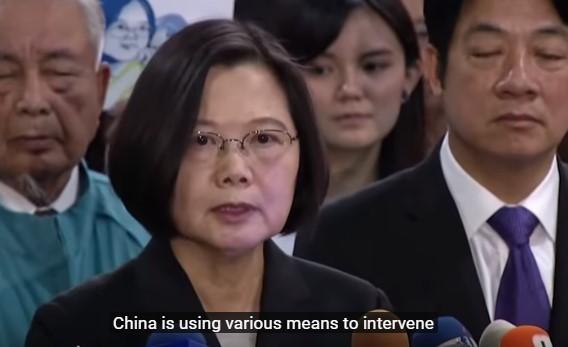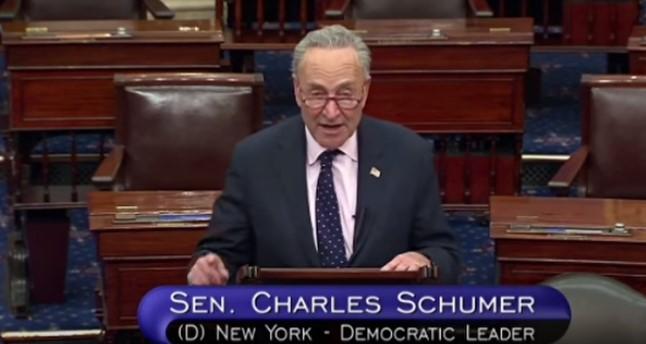So, word of advice. When you have 10,000 students peacefully protesting because of concerns the government may be making decisions that will erode human rights and democracy, what the government should not do is turn the police on them and blast them with water cannons. That kind of sends the message that they’re right to be worried.
That’s what happened in Taiwan one early morning last week. At 8 p.m. the night before, hundreds of student protesters occupied the Executive Yuan, the headquarters of the executive branch of the Taiwanese government. Taiwanese Premier Jiang Yi-huah ordered the police in and kicked the students out.
But it wasn’t easy. The Internet is flooded with footage of students lying on ground, linking arms, literally requiring the police to pry them one by one off the scene. And when that didn’t work, powerful water cannon blasts were used. You can see the footage on the China Uncensored YouTube page.
According to Taiwan’s Central News Agency, at least 137 were injured. That includes protesters, police, and journalists, though most with minor injuries. At least 58 were arrested.
The students’ occupation of the Executive Yuan was sparked by a speech earlier in the day by Taiwanese President Ma Ying-jeou. Since March 18, protesters, at one point numbering 10,000, have been staging a sit-in at Taiwan’s legislature building, the Legislative Yuan. They’ve been protesting the Trade in Services Agreement, (TiSA), an agreement that will further open up investment in Taiwan by China.
Now what’s so bad about that? Well, the deal was snuck through by the governing Kuomintang (KMT) party without any bipartisan discussion and, since China considers Taiwan not to be an independent country, but instead a breakaway province and has vowed to reclaim it, by force, if necessary, some people kind of have this crazy idea that China might be some kind of threat to Taiwan and major economic policies involving China should be handled with, maybe, some caution.
Criticizing the Criticizers
So in response to the sit-in and the student demonstrators’ fairly legitimate questions, Ma Ying-jeou, instead chose to criticize the protesters, saying, “Is this the kind of democracy that we want? The foundation of democracy is rule of law—adhering to the rule of law is fundamental to our statehood.”
You know, people being able to protest important deals made by the government without the public’s knowledge, I’m pretty sure that is the kind of democracy you want.
Actually, Ma, I think what you’re talking about, where the government can do what it wants and people aren’t allowed to complain, I’m pretty sure that’s not a democracy.
Those comments are what sparked the protesters to extend their sit-in Sunday night from the legislative building to the nearby executive building. Apparently, for some reason, they felt like the government wasn’t listening to them. Now, KMT-sponsored media have criticized the students for their violent and illegal conduct.
And to show just how sinister they are, these anarchist students have chosen for themselves the name and image of the sinister sunflower to represent their nefarious goals. Clearly, the students of the Sunflower Revolution are way more of a threat to Taiwan than the Chinese regime’s 1600 missiles pointed at the island.
Taiwan and China
So what is the deal between China and Taiwan? Well, there’s a lot of history there, but here’s the cliffs notes version. The KMT used to rule in China until they were overthrown by the Communists in 1949 and fled across the Taiwan Strait. And ever since, the cornerstone of Beijing’s policy toward cross-strait relations has been to destroy Taiwan. Sorry, I mean, reunify Taiwan with mainland China.
Taiwan nowadays is a multiparty democracy, with the two main parties being the KMT and the Democratic Progressive Party (DPP). Now, originally, both the KMT and the DPP had strong stances against the Chinese Communist Party, what with that whole, we-will-invade-you stance of theirs.
But the Communist Party has been slowly wooing the KMT, which is an easier target than the DPP, since the KMT has always favored reunification with China, albeit not under the Communist Party. Since KMT leader Ma Ying-jeou was elected in 2008 and re-elected in 2012, he’s brought Taiwan and China closer than ever. Trade has increased, tourism is up, and as a result a lot of new money has been flowing into Taiwan. In February, Taiwan and China hosted high-level talks that represented the first government-to-government contact since the KMT fled to Taiwan in 1949.
So why wouldn’t a new trade deal that allows more cross-strait investment be a bad thing?
Well, remember, throughout all of this, China has never once gone back on its vow to retake Taiwan. Of course, it can’t actually invade because if it did, the United States is bound by a Congressional Act to help Taiwan, and I personally question whether China’s People’s Liberation Army is actually well-trained enough to even launch an invasion.
Soft Power
But China can use its economic power to slowly gain influence in Taiwan. That’s basically what’s been happening in Hong Kong. In several of my recent China Uncensored episodes, I’ve shown how communist authorities have been slowly eroding freedoms supposedly guaranteed in Hong Kong—freedoms that would be unthinkable in mainland China.
And so when the Taiwanese government pushes forward this new trade deal with China so secretively that the Sunflower Student Movement has taken to calling it a black box, people are legitimately a bit concerned.
Now the problem with this trade pact is it’s seductive. In the short term, it’s a good thing. It will bring in money, create jobs, though some think at the expense of smaller companies in Taiwan, it won’t allow China to manipulate prices because it’s already doing that without the trade pact. President Ma said it’s vital to maintain Taiwan’s competitive edge in the international market and if it goes back on the agreement, it will damage its credibility as a trading partner. But in the end, Taiwan’s skilled workers and businessmen will be lured to China, and businesses will be owned and controlled by mainland interests. And those are the consequences only if you assume China is a country ruled by law that doesn’t have some ulterior master plan to retake Taiwan. Otherwise things could be worse.
But the protesters are having an impact. Although they’ve been kicked out of the executive building, they’re still occupying the Legislature. And the government is starting to listen. The KMT has now agreed to review the trade pact one clause at a time with the DPP at the next reading. As for Ma Ying-jeou, he’s finally agreed to meet face-to-face with the protesters, after saying that he wouldn’t do so earlier.
So as I see it, Hong Kong and Taiwan are in very similar situations. Later this year, the potentially massive Occupy Central will be held in Central, Hong Kong, to protest encroachment from the Chinese Communist Party. I think the only hope of both Taiwan and Hong Kong is if the people of both places keep speaking out against the Communist Party’s attempts to influence their governments. Otherwise, in the next 10 or 15 years, who knows what Hong Kong and Taiwan will look like?
For more China Uncensored, please visit youtube.com/ntdchinauncensored



